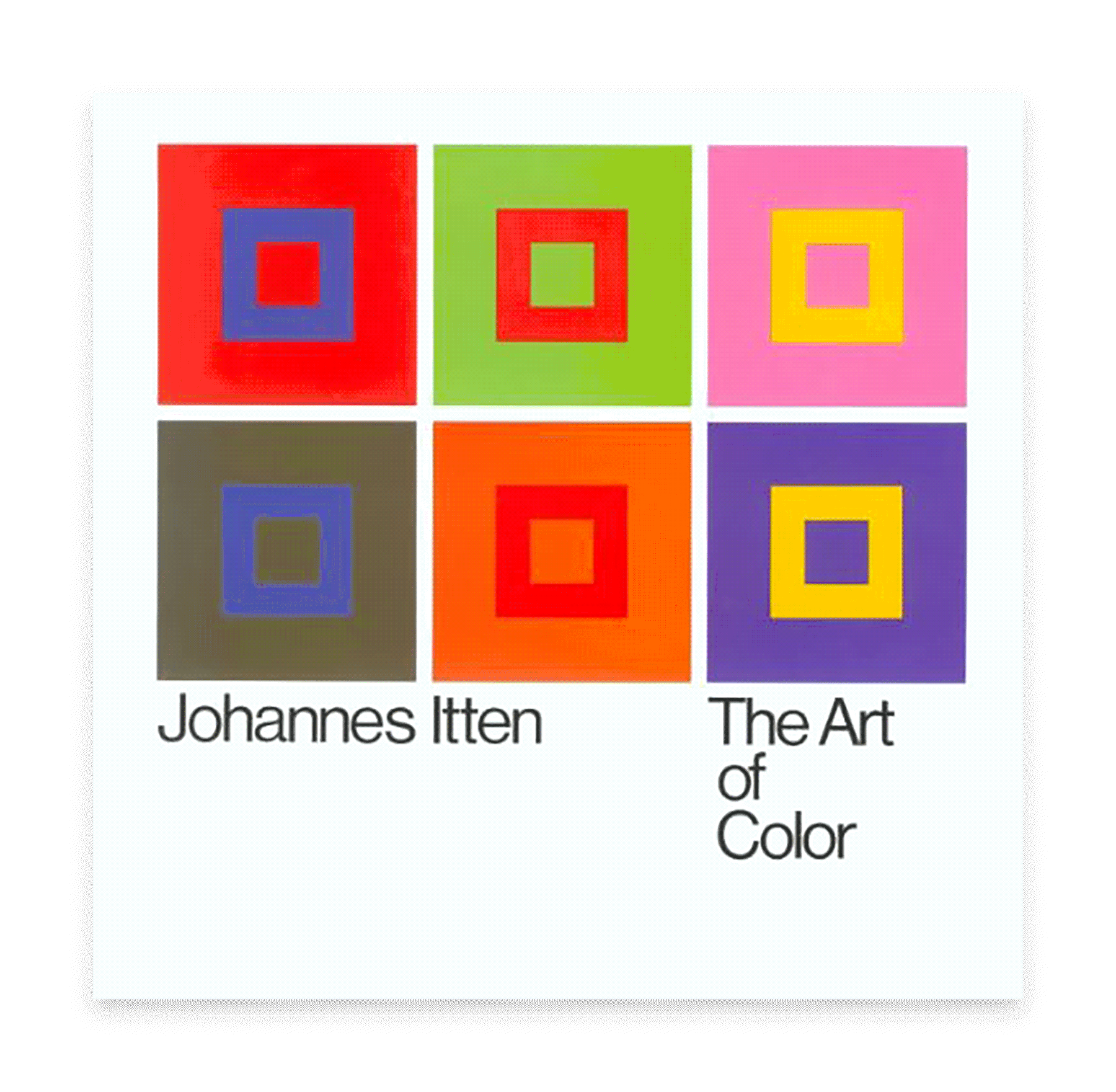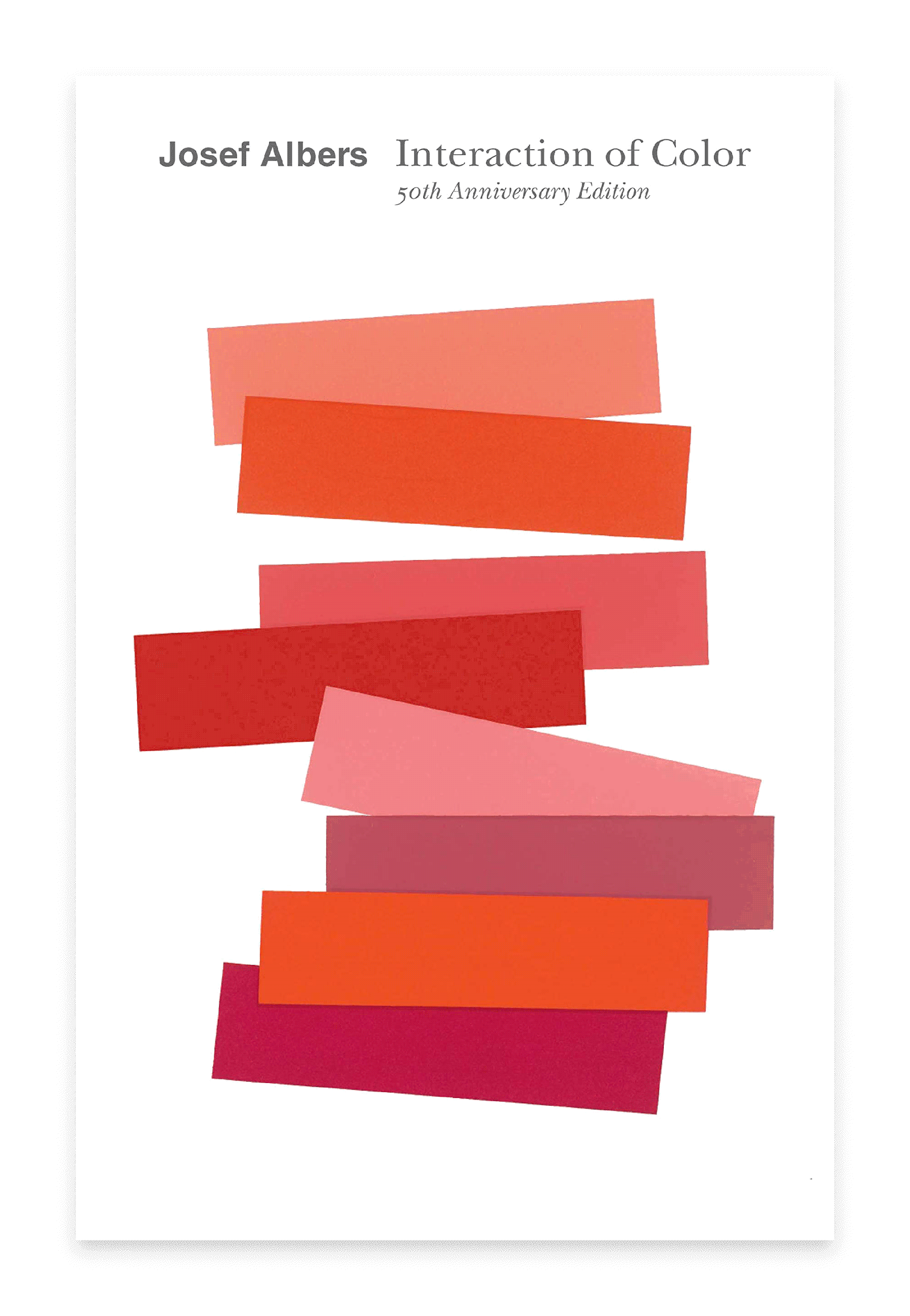
COLOR GRADIENT
Hommage à Johannes Itten
2021 | 1% Artistique | Permanent Installation.
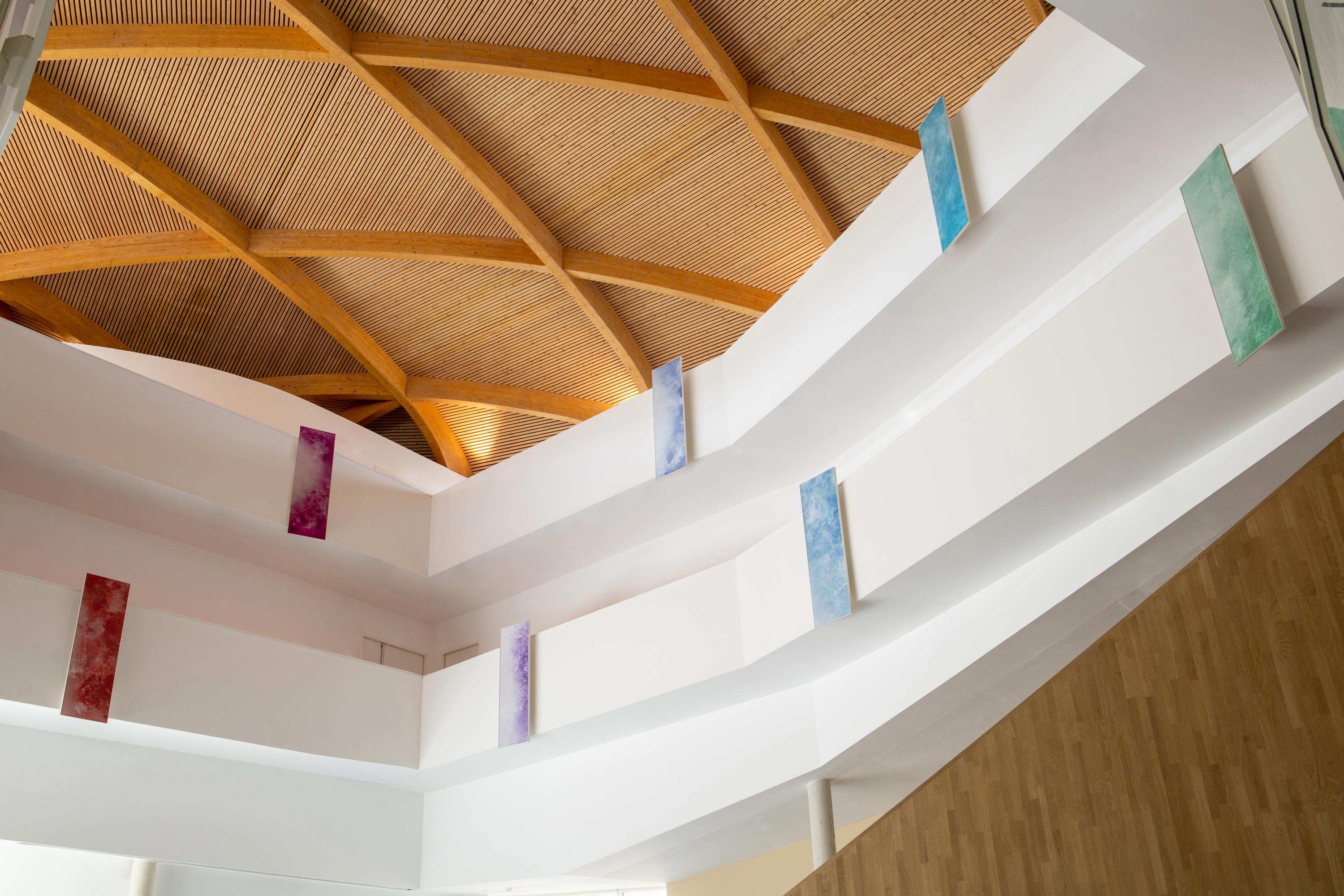
IMT MINES ALÈS | HUB CRÉATIVITÉ
7 Rue Jules Renard
30100 Alès, France.

Ce nouveau HUB créé pour IMT Mines d’Alès, conçu par l’Atelier Nebout architectes est un lieu au carrefour des sciences et recherches, un lieu vertueux d’enrichissement pédagogique, un lieu de synergie créative. De l’extérieur il apparaît comme une bulle, un îlot, un poumon au cœur de l’École des Mines. De l’intérieur, grâce son amphithéâtre central, ouvert, il apparaît comme un lieu de rencontre, de synergie et de croisement au carrefour des créativités. La forme de la coursive qui entoure cet amphithéâtre incarne un processus de recherche. Elle dessine une spirale vertueuse, une déambulation à la fois horizontale et ascendante dans une dynamique oblique progressive. Par le parcours qu’elle propose nous devenons à la fois spectateur et acteur de ce lieu. Nous pouvons voir et interagir avec le cœur du HUB et également nous isoler dans des espaces périphériques plus intimes.
—
This new HUB created for IMT Mines d’Alès, designed by Atelier Nebout architectes, is a place at the crossroads of science and research, a virtuous place of educational enrichment, a place of creative synergy. From the outside it appears like a bubble in the heart of the Ecole des Mines. From the inside, thanks to its central, open amphitheater, it appears as a place of meeting, synergy at the crossroads of creativity. The shape of the passageway that surrounds this amphitheater embodies a process of research. She draws a virtuous spiral, an ambulation that is both horizontal and ascending in a progressive oblique dynamic. Through the journey she offers we become both spectator and actor of this place. We can see and interact with the heart of the HUB and also isolate ourselves in more intimate peripheral spaces.
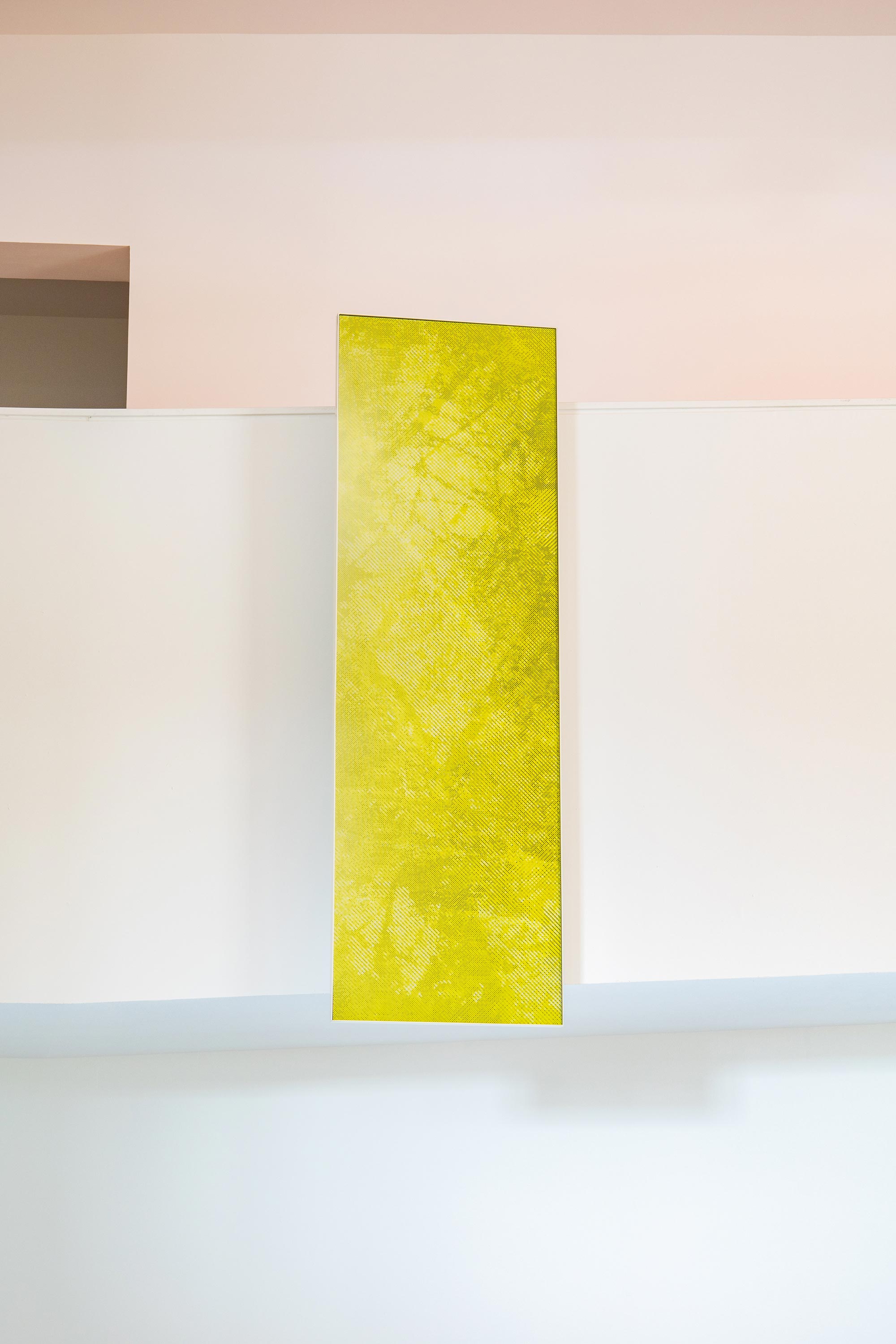
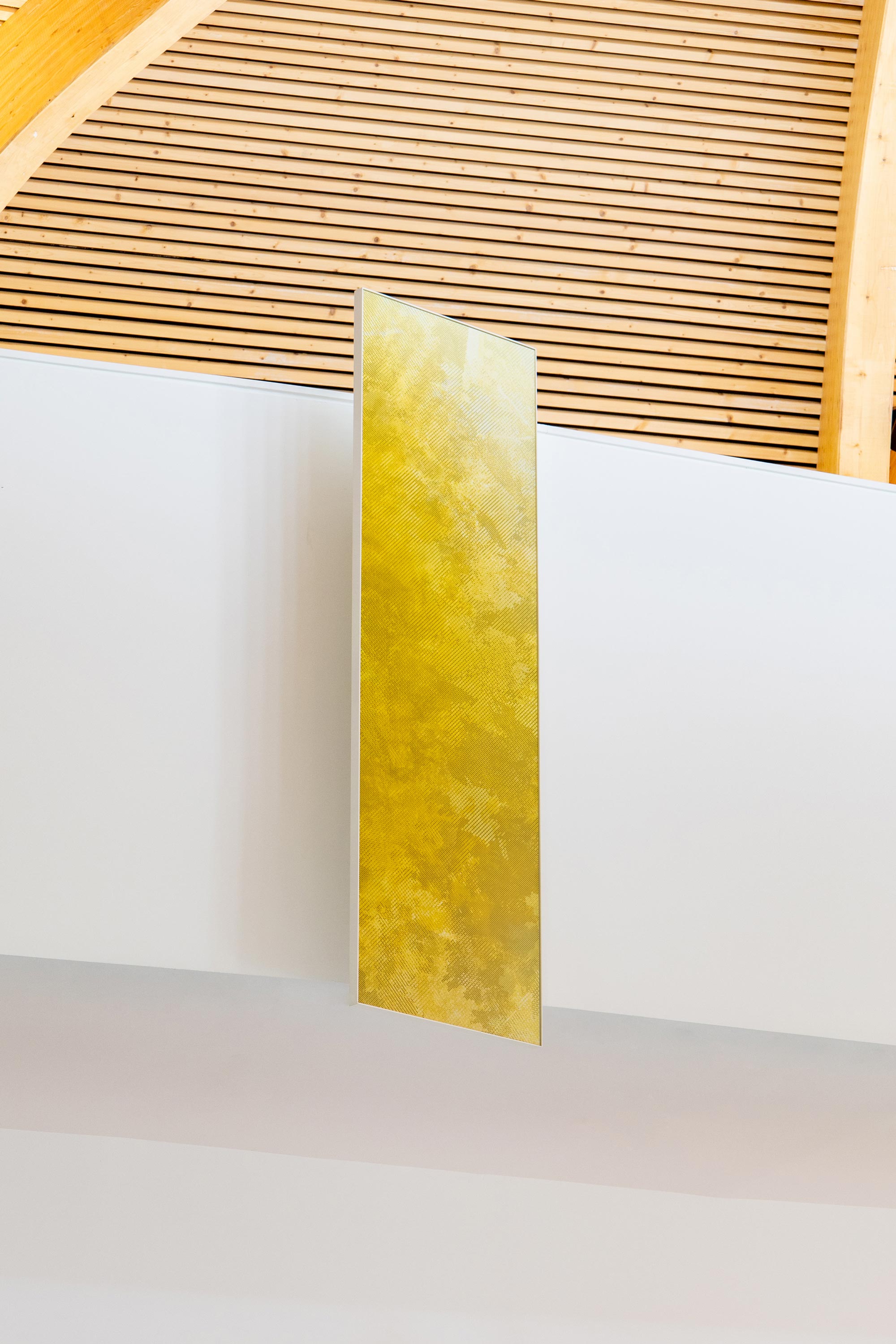
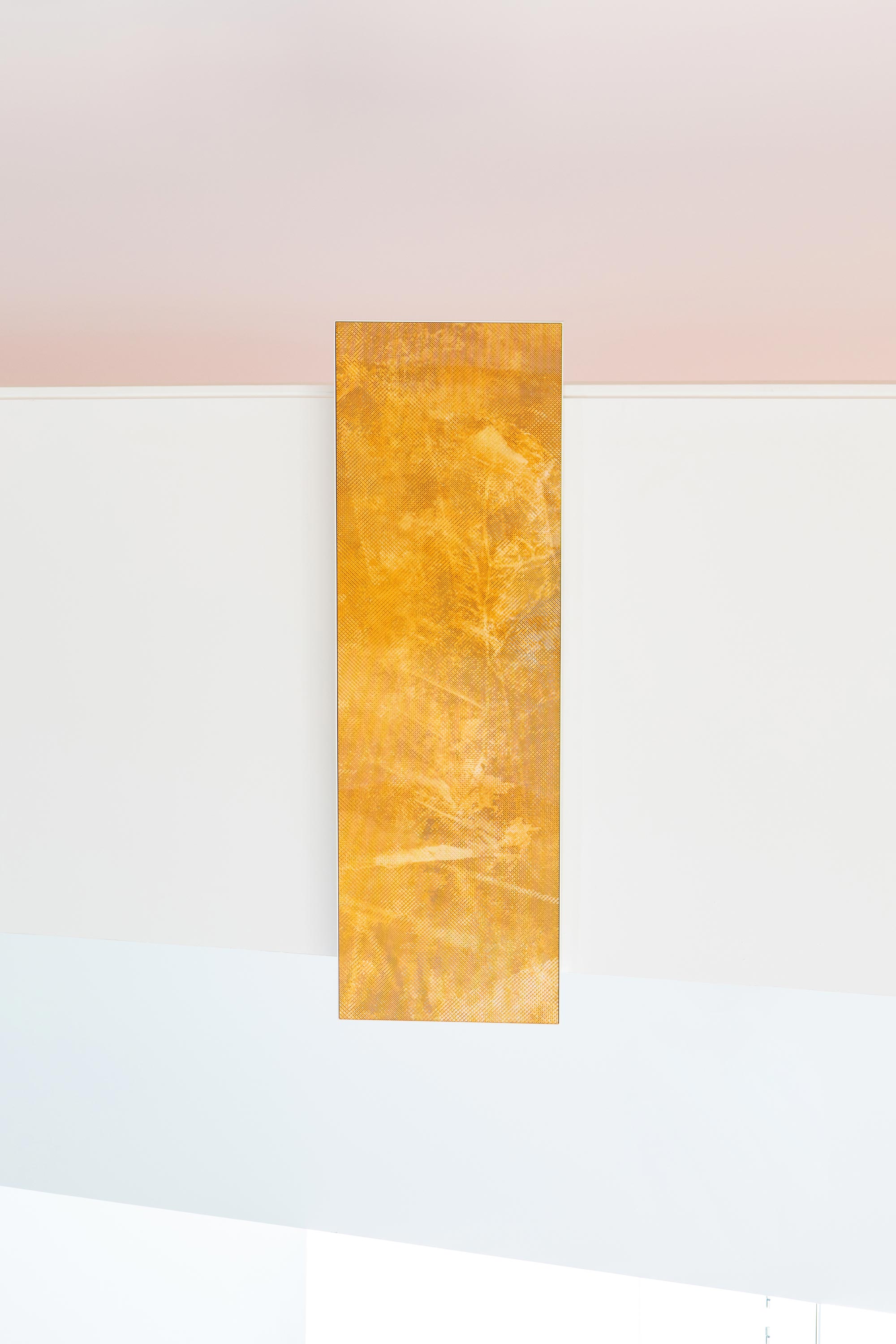
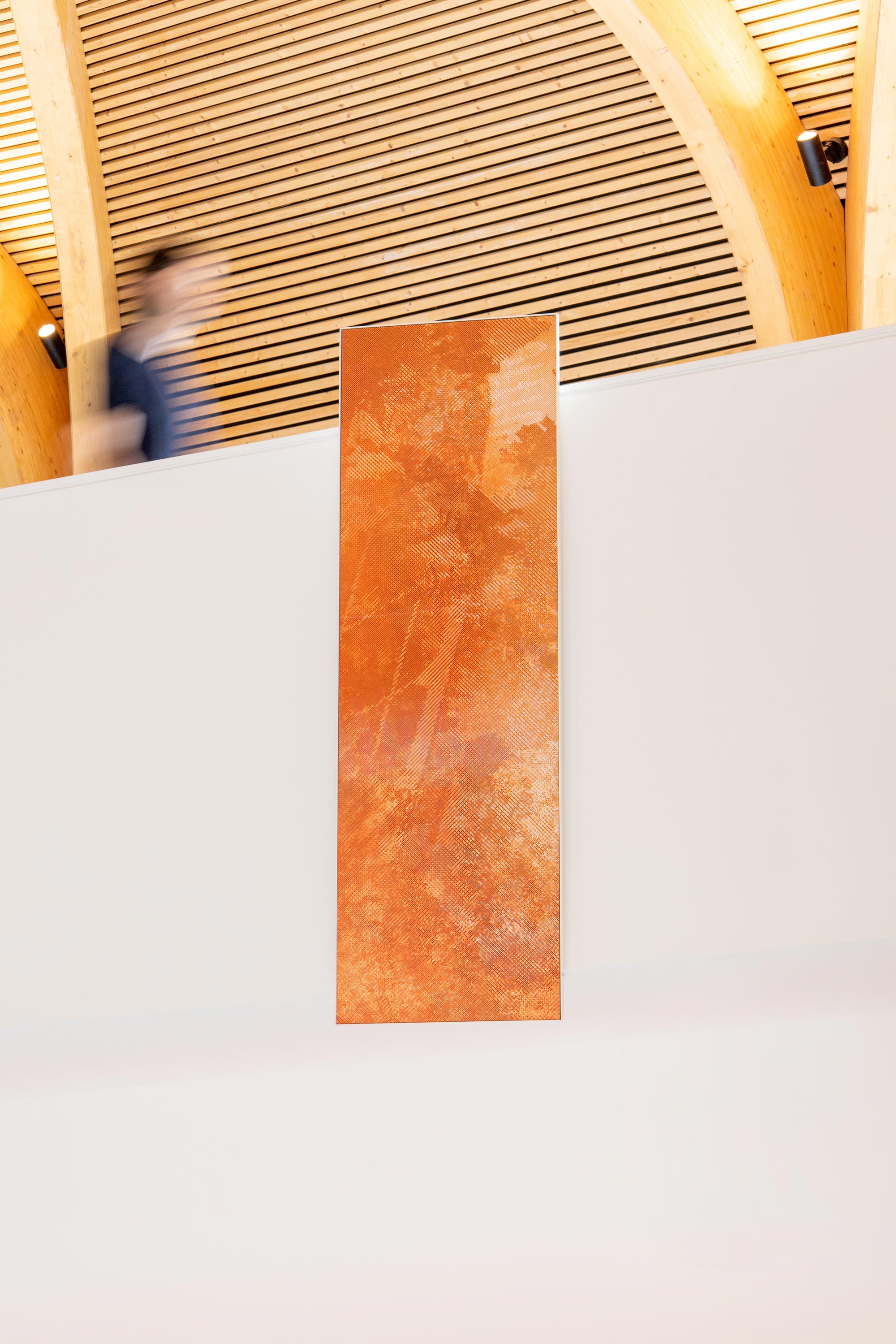
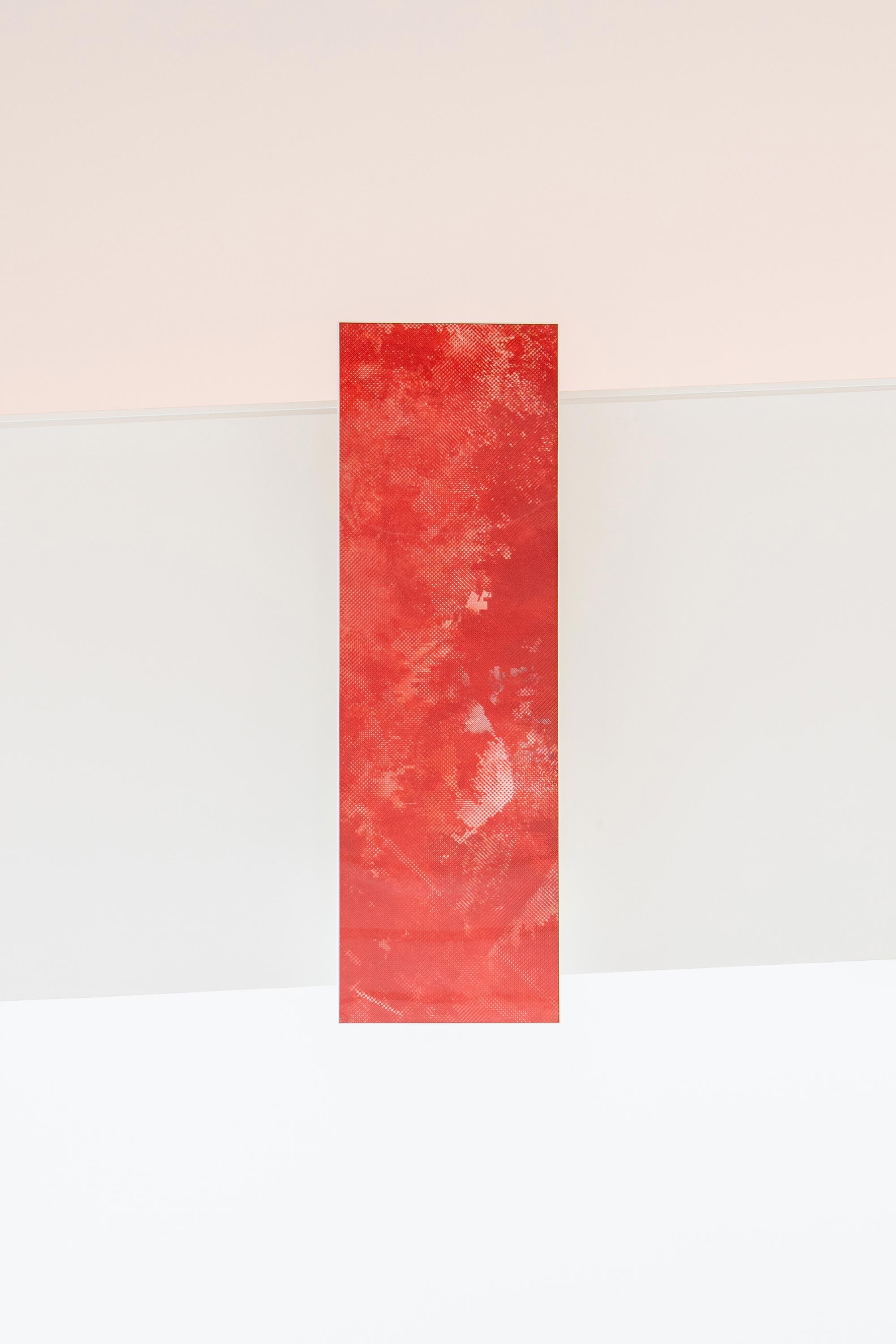
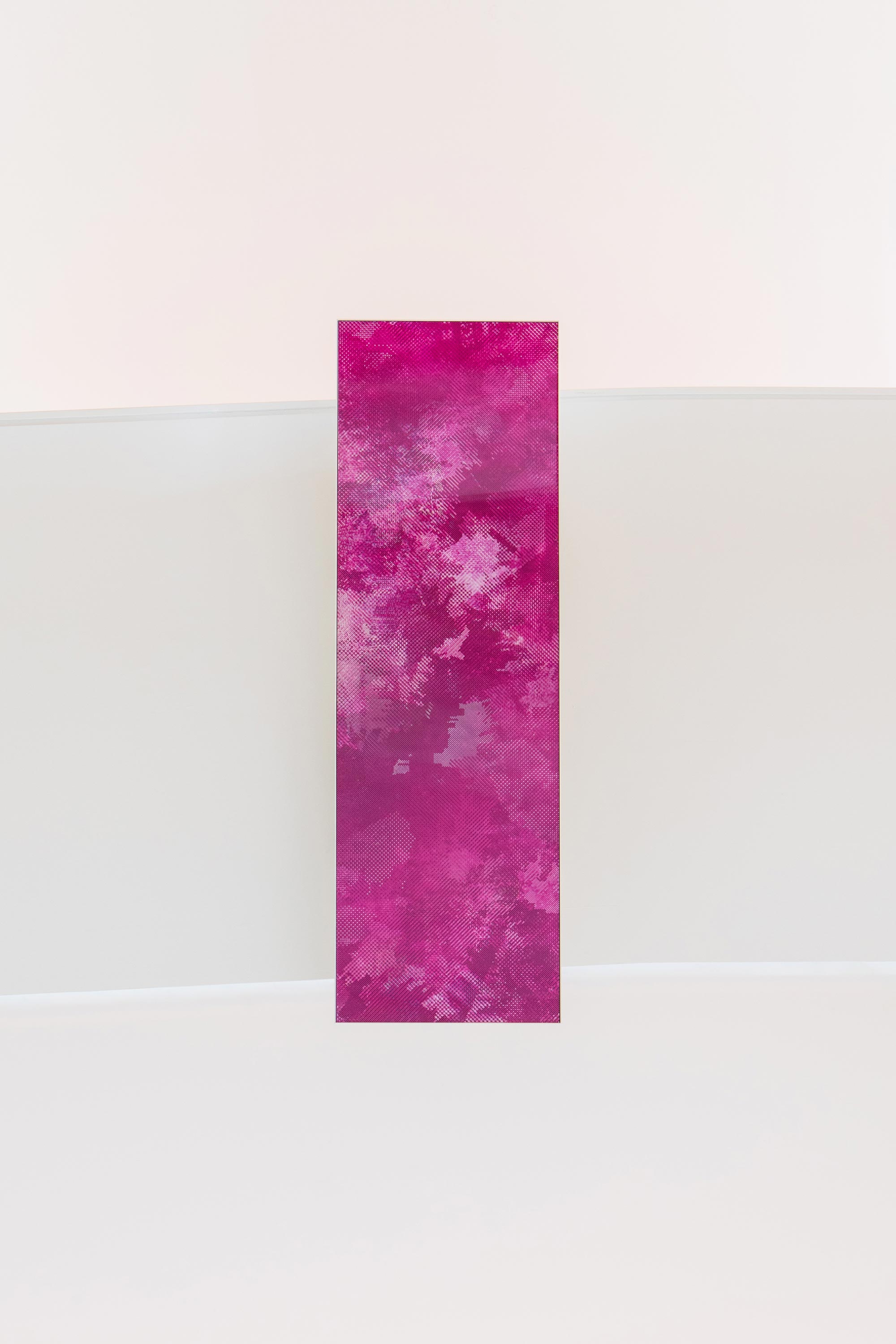

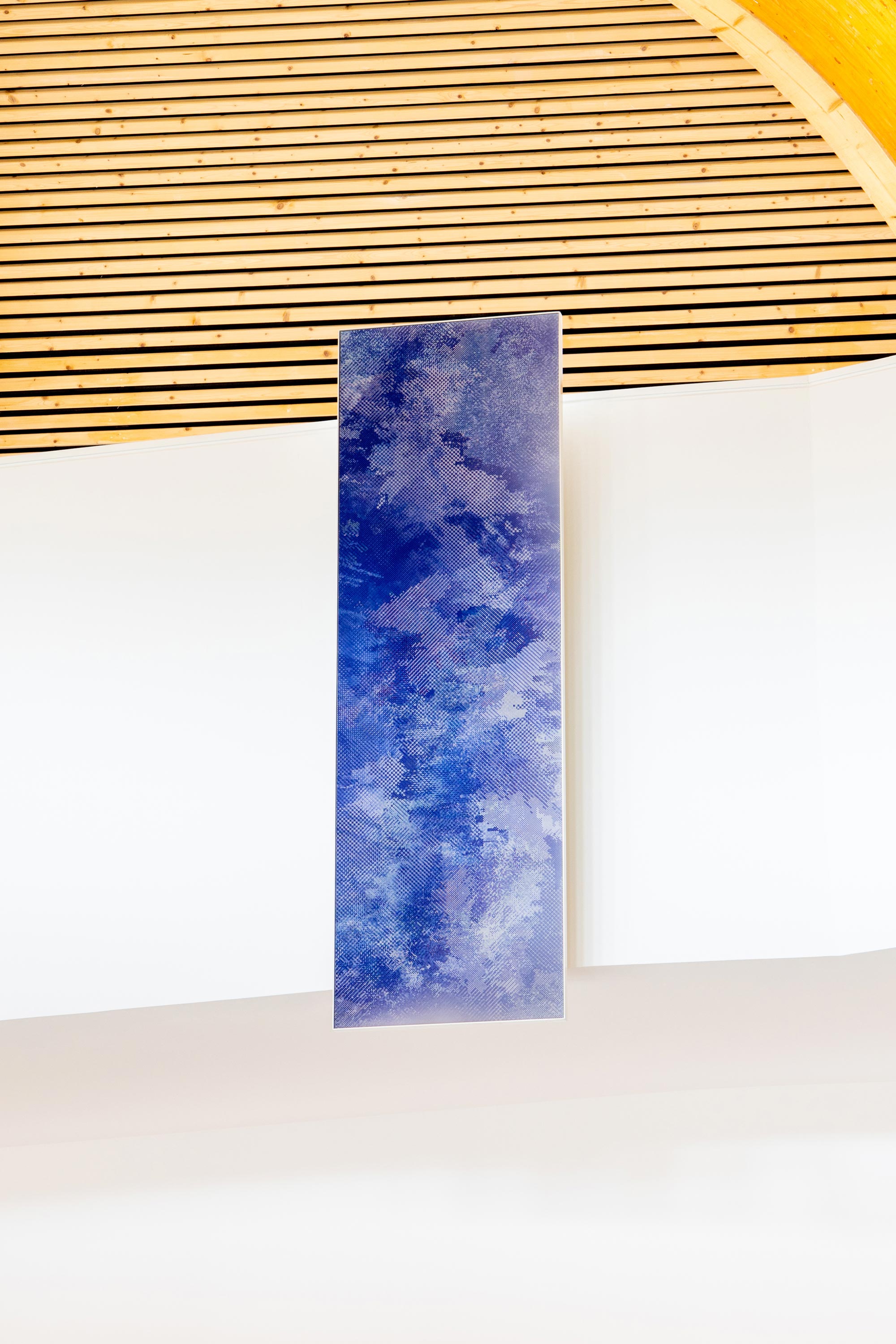
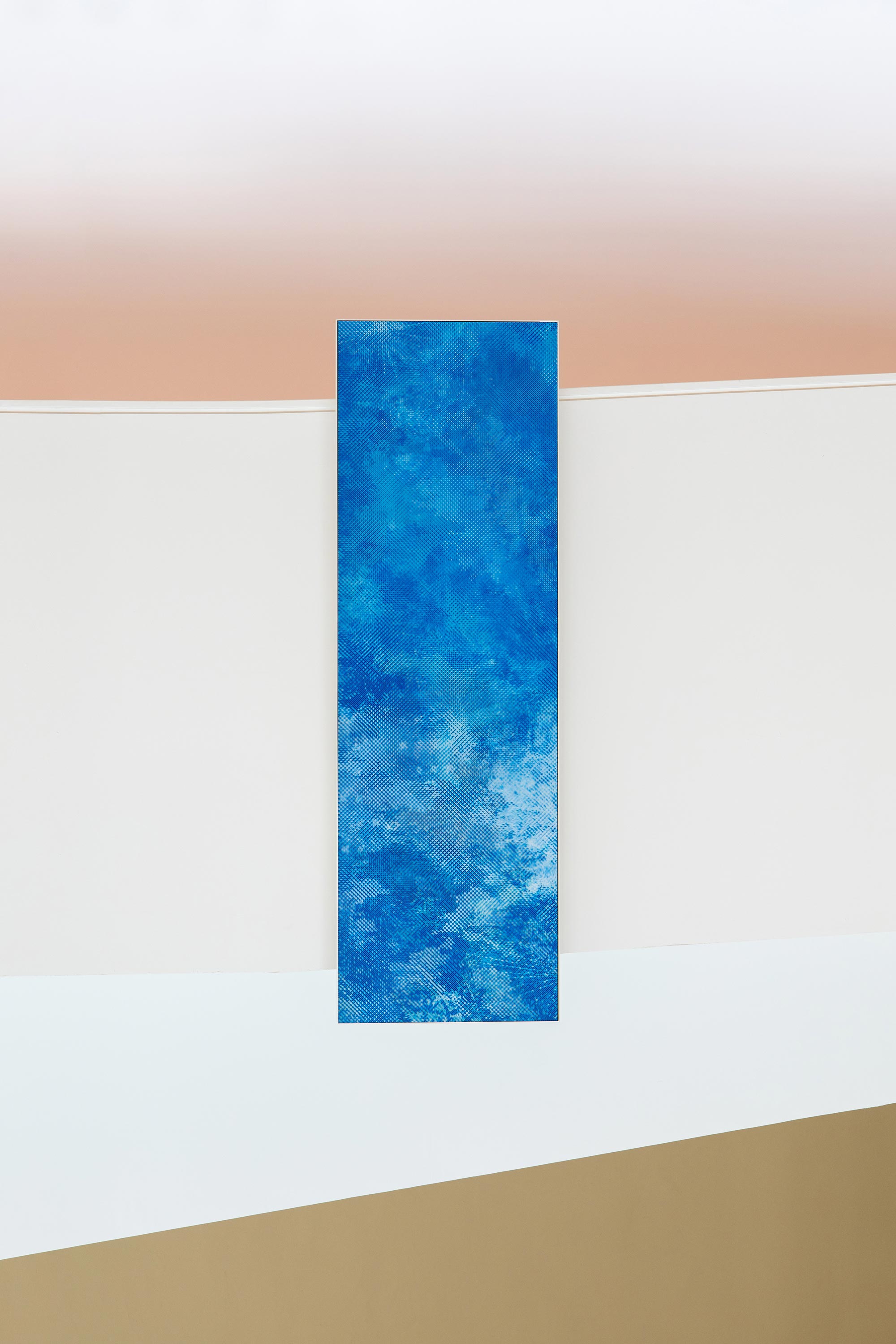
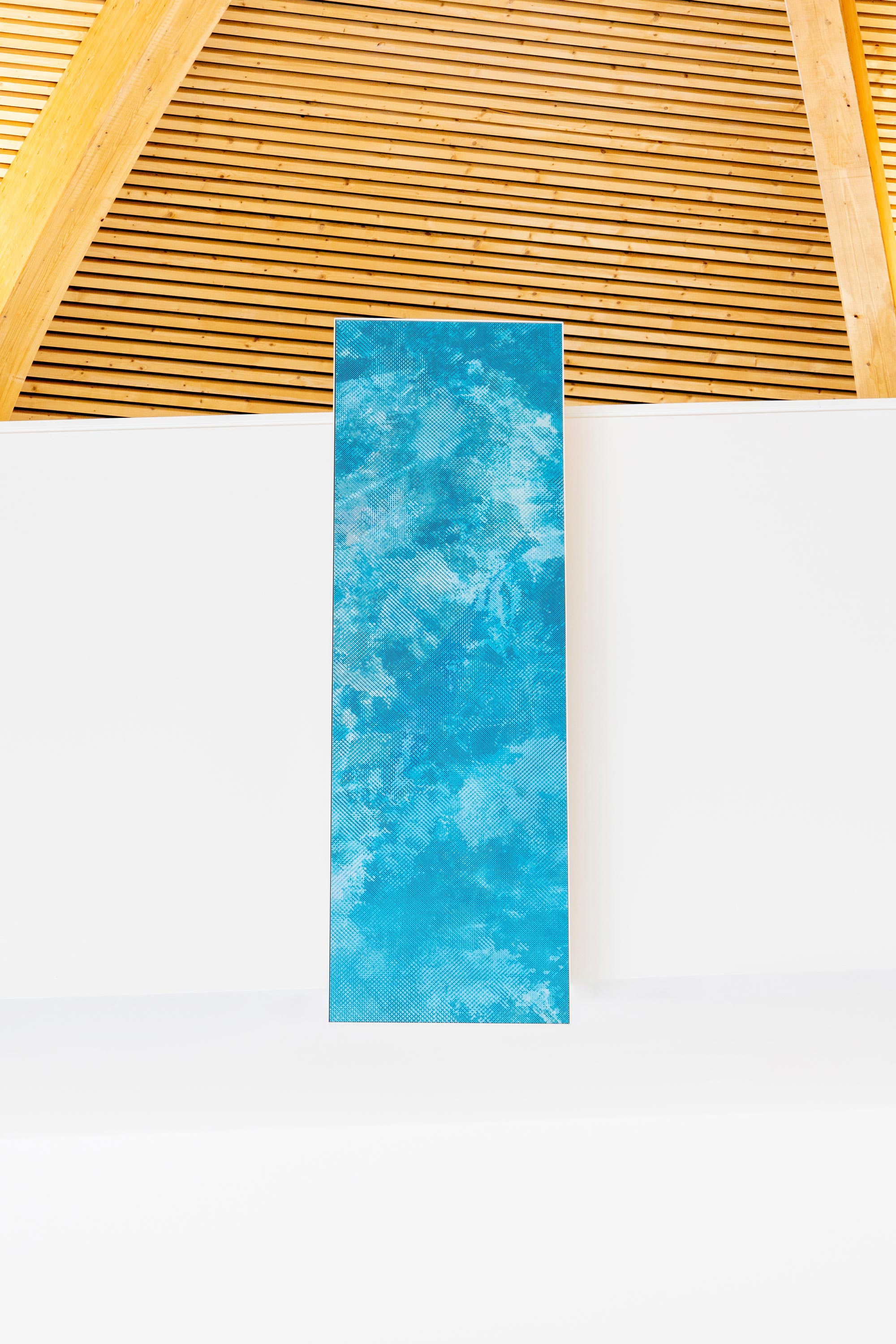
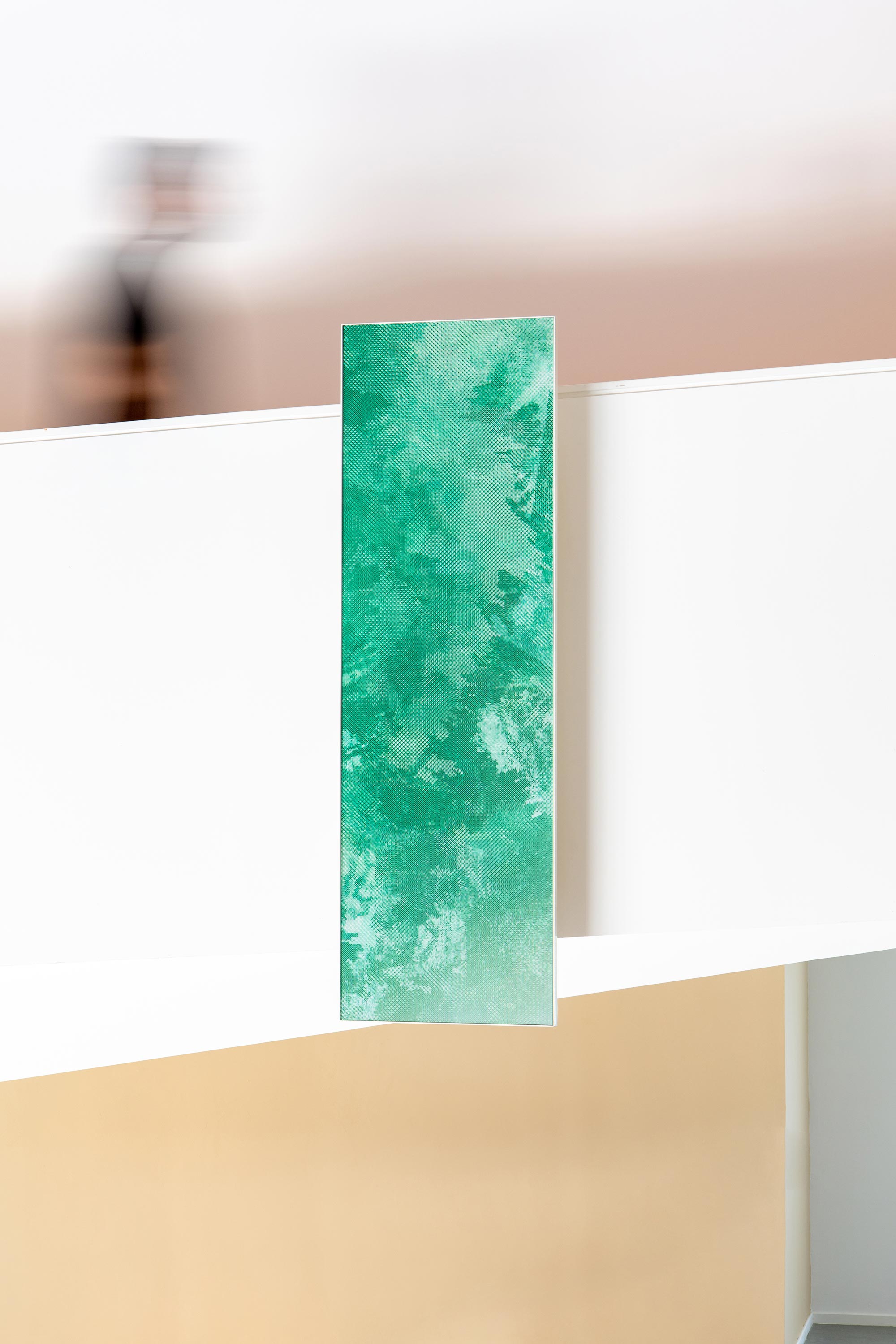
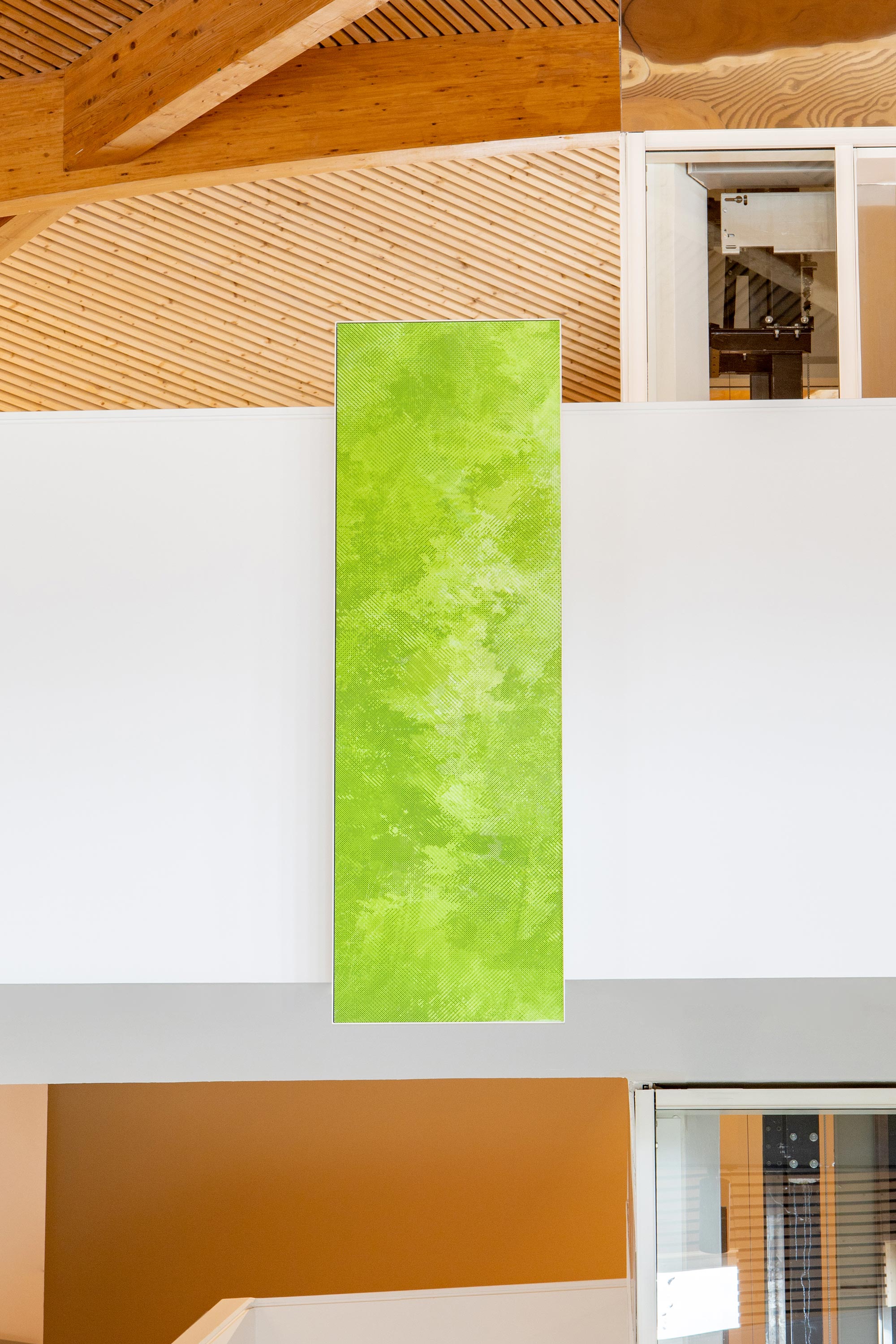
L’installation artistique créée pour ce lieu est une série de douze œuvres abstraites, cinétique, aux formats verticaux et disposées à intervalles réguliers sur le long de la coursive. Elle a pour but d’accompagner et de souligner cette synergie créative incarnée dans l’architecture du bâtiment. Dans ce parcours de recherche et d'innovation, elle y détermine des paliers. Les œuvres proposées prennent vie en harmonie avec cette circulation et enrichissent l’expérience de déambulation offrant une rythmique interactive, une dynamique incrémentale verticale.
—
The site-specific installation is a series of twelve abstract, kinetic works, in vertical formats and arranged at regular intervals along the passageway. It aims to support and highlight this creative synergy embodied in the architecture of the building. In this course of research and innovation, it determines levels. The proposed works come to life in harmony with this circulation and enrich the walking experience offering an interactive rhythm, a vertical incremental dynamic.
Pour la création de ses œuvres, Mathieu Merlet Briand recycle, agglomère et synthétise des milliers d’images et données informatiques. Pour cette série, il a basé ses recherches autour des 12 teintes du cercle chromatique de Johannes Itten et des données liées au 6 domaines d’excellence de l’Ecole des Mines*.
—
For the creation of his works, Mathieu Merlet Briand recycles, agglomerates and synthesizes thousands of images and computer data. For this series, he based his research around the 12 shades of Johannes Itten's chromatic circle and data related to the 6 areas of excellence of the Ecole des Mines *.
—
* 1 Environment, Energy & Risks, 2 Civil Engineering & Sustainable Building, 3 Industry of the future, 4 Computing & Artificial Intelligence, 5 Innovative & Ecological Materials, 6 Mineral Resources.Ces œuvres sont basées sur un principe optique et apparaissent comme cinétiques et interactives. Elles s’animent en fonction de nos déplacements et de nos angles vues. De même, en fonction de la lumière elles varient en intensité. Chaque œuvre est ainsi un tableau vivant à part entière en interaction avec son environnement. Chaque oeuvre fonctionne sur un même principe d’animation visuelle avec en vue de face une abstraction colorée monochromatique, et en vue de côté une animation progressive et continue vers le blanc. Cette installation cinétique prend sens dans ce lieu de déambulation. En nous déplaçant au sein de la coursive, toute l’installation synchronisée prend vie.
—
These works are based on an optical principle and appear to be kinetic and interactive. They come to life according to our movements and our viewing angles. Likewise, depending on the light, they vary in intensity. Each work is thus a living painting in its own right in interaction with its environment. Each artwork works on the same principle of visual animation with a front view, a monochromatic colored abstraction, and a side view, a progressive and continuous animation towards white. This kinetic installation takes on meaning in this place of movement. As we move through the passageway, the entire synchronized installation comes to life.
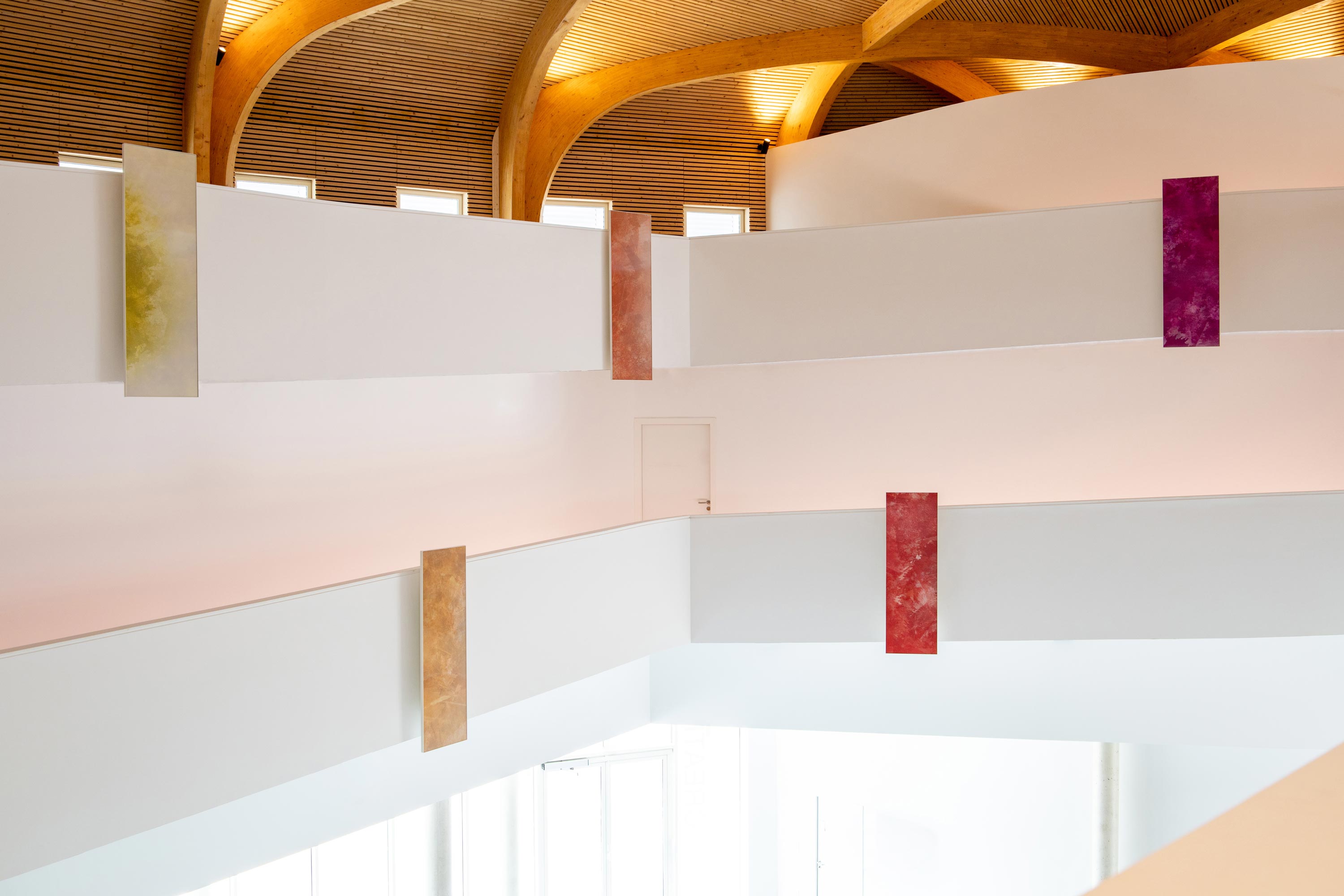
L’ensemble de l’installation est à voir comme une grande timeline décrivant les étapes d’un processus créatif. Le point de départ est la couleur Jaune, qui symbolise ici l’idée initiale. Puis en passant par toutes les couleurs, l’ascension se termine sur le Vert : couleur de la Nature. Ainsi ce parcours tend à guider symboliquement les recherches et les innovations que ce futur HUB a pour ambition de catalyser vers un monde plus durable.
—
The entire installation should be viewed as a large timeline depicting the stages of a creative process. The starting point is the color Yellow, which here symbolizes the initial idea. Then, going through all the colors, the ascent ends on Green: the color of Nature. Thus this course tends to symbolically guide the research and innovations that this future HUB aims to catalyze towards a more sustainable world.
L’ensemble de l’installation est à voir comme une grande timeline décrivant les étapes d’un processus créatif. Le point de départ est la couleur Jaune, qui symbolise ici l’idée initiale. Puis en passant par toutes les couleurs, l’ascension se termine sur le Vert : couleur de la Nature. Ainsi ce parcours tend à guider symboliquement les recherches et les innovations que ce futur HUB a pour ambition de catalyser vers un monde plus durable.
—
The entire installation should be viewed as a large timeline depicting the stages of a creative process. The starting point is the color Yellow, which here symbolizes the initial idea. Then, going through all the colors, the ascent ends on Green: the color of Nature. Thus this course tends to symbolically guide the research and innovations that this future HUB aims to catalyze towards a more sustainable world.
The entire installation should be viewed as a large timeline depicting the stages of a creative process. The starting point is the color Yellow, which here symbolizes the initial idea. Then, going through all the colors, the ascent ends on Green: the color of Nature. Thus this course tends to symbolically guide the research and innovations that this future HUB aims to catalyze towards a more sustainable world.
—
Inspirations

Un hommage au cercle chromatique de Johannes Itten
À la fois peintre, enseignant et théoricien de la couleur, la figure de Johannes Itten (1888 - 1967) est intéressante vis-à-vis de l’École des Mines. Autant artiste que chercheur son cercle chromatique est la base fondamentale de l’enseignement par la pratique de la couleur. Ce dispositif graphique a été élaboré pour structurer la perception des couleurs. Comme en musique, il permet de déterminer une partition, un rythme cohérent entre des valeurs colorées. Ces études empiriques sur la couleur seront poursuivies notamment par Josef Albers, dans son livre L’interaction des Couleurs de 1963. La forme verticale des œuvres de l’installation COLOR GRADIENT s’inspire notamment de ces bandes d’échantillons et expérimentations colorés de Josef Albers.
—
At the same time painter, teacher and theorist of color, the figure of Johannes Itten (1888 - 1967) is interesting for the Ecole des Mines. As much artist as researcher, his chromatic circle is the fundamental basis of teaching through the practice of color. This graphic device was developed to structure the perception of colors. As in music, it allows to determine a score, a coherent rhythm between colored values. These empirical studies on color will be continued in particular by Josef Albers, in his book Interaction of Color, 1963. The vertical form of the works of the COLOR GRADIENT installation is inspired in particular by these bands of samples and colorful experiments by Josef. Albers.
+
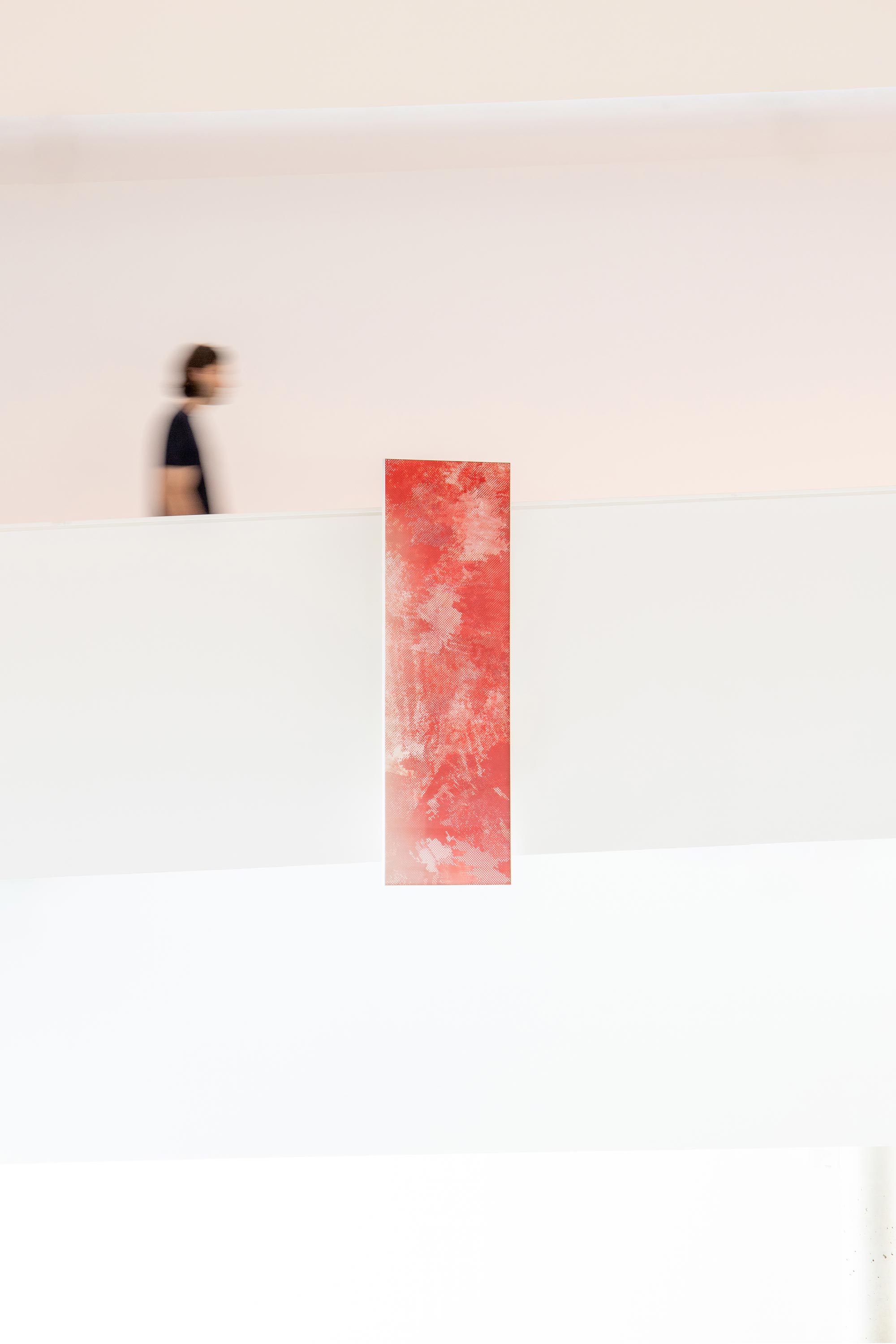
© Mathieu Merlet Briand studio
CONTACT ︎
mathieumerletbriand.news@gmail.com
© Mathieu Merlet Briand studio


